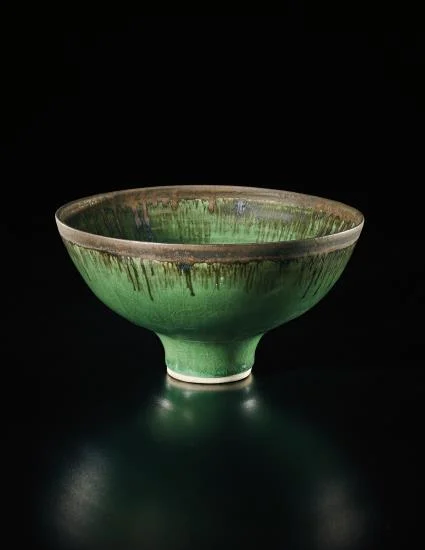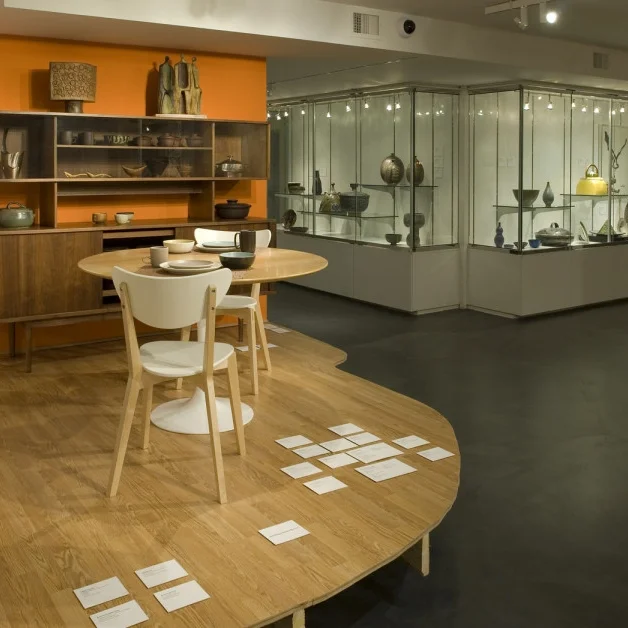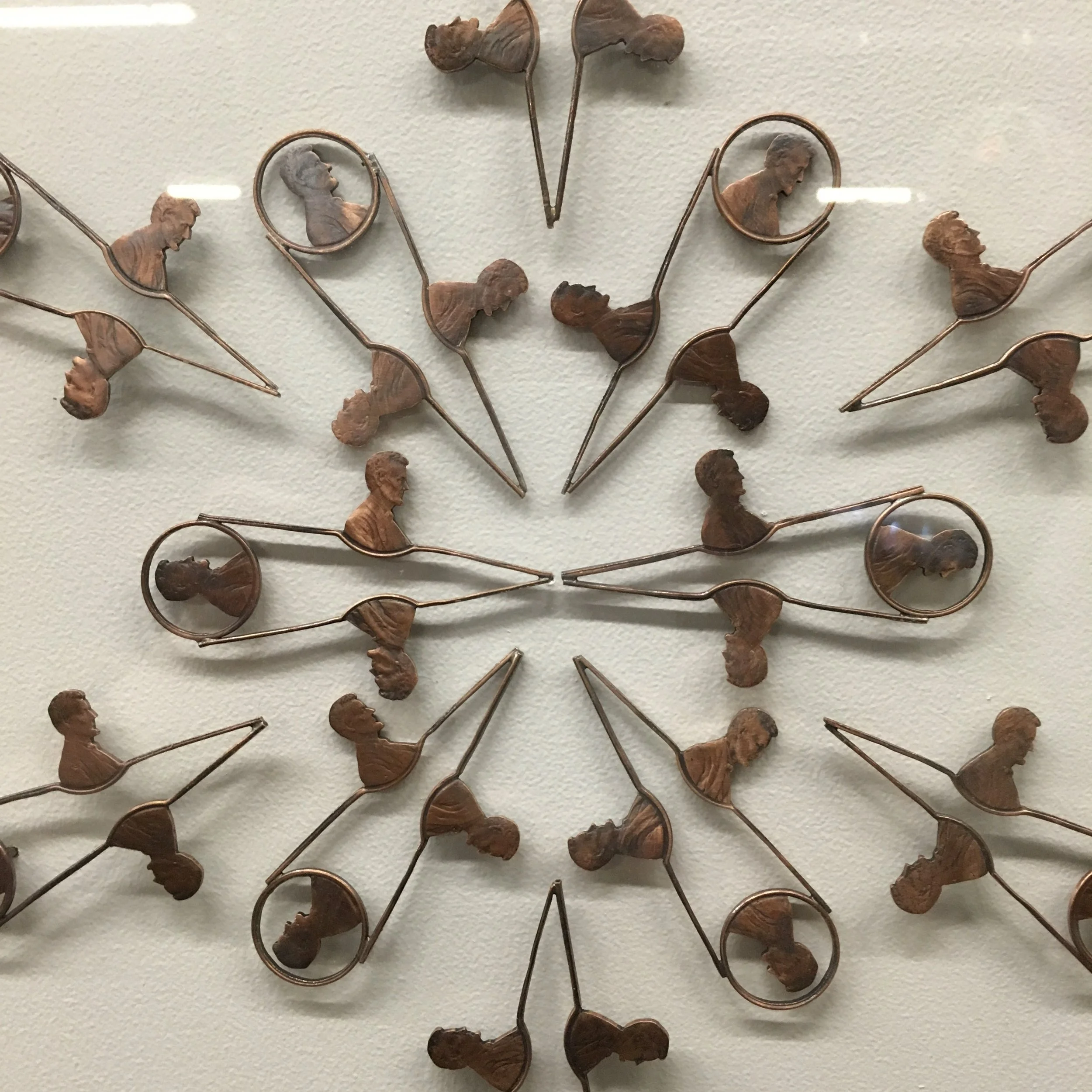Autumn is an ideal time for a visit to the Corning Museum of Glass in New York’s Finger Lakes region. As the leaf-changing season peaks, an equally dazzling display awaits inside, where daily glass-blowing demonstrations draw crowds so transfixed that they forget to Instagram the experience. Corning’s permanent collection galleries hold glass vessels, lighting fixtures, jewelry and even furniture dating as far back as Mesopotamia and Ancient Egypt.
Read MoreMuseum visitors all seem to be dedicated photographers these days, navigating galleries as they capture vivid design details and immersive art installations with their smartphones, then sharing their images instantly. To view art and to experience a museum through a smartphone camera’s viewfinder is so commonplace now as to be unremarkable.
Read MoreThe late, legendary Italian architect and designer Ettore Sottsass has been — to paraphrase Yogi Berra — rediscovered all over again. In recent years, his work has been shared with wide audiences through a series of articles and “explainers,” like this recent short video from Vox, or this 2014 piece about Memphis by Alissa Walker that appeared on Gizmodo. And his profile got a big boost from his prominence in the exhibition Postmodernism: Style and Subversion, 1970—1990 at the Victoria & Albert Museum in 2011.
Read MoreIt’s the height of summer, and like the shimmery dragonflies and beetles of the season, fin de siècle-style iridescence seems to be in the air these days. The New York Historical Society unveiled “A New Light on Tiffany,” a luminous re-installation of its famed collection of Tiffany lamps in late April of this year, and in addition to its dreamy exhibition space, designed by Czech architect Eva Jiricna, the long-overlooked story of the “Tiffany Girls” now takes center stage.
Read MoreTwo social movements in the late 19th and early 20th centuries, organized labor and women’s suffrage, both emerged just as photography was coming into its own as a documentary form, and banners appear in many images of their marches and protests. They affect the way we see these events in the most literal sense, visually populating scenes of history with their words.
Read MorePhiladelphia’s Old City is thick with American history. Within a short walking distance, visitors can see the Liberty Bell, stand inside Independence Hall and behold the ruins of the original President’s House, where George Washington and John Adams both lived in the 1790s. For good measure, there are always a few historic interpreters in 18th-century costume inviting tour groups to step lively over the cobblestones.
Read MoreThe new and noteworthy in the worlds of ceramics and glass can come from any part of the globe, and indeed any century. This month’s crop of highlights range from vintage Americana to contemporary art, with the requisite dash of midcentury style in between. The quirks and fascinating history of Anna Pottery will be on full view when a rare find from the Illinois studio goes up for sale on June 17 at Jeffrey S. Evans & Associates in Mt. Crawford, VA.
Read MoreIn November 1941, a small magazine was produced from the headquarters of the Handcraft Cooperative League of America on East 54th Street, just upstairs from its retail shop, America House. The magazine’s cover suggested a mystery inside: With the league’s emblem, a stylized American eagle, perched in the upper left-hand corner, the central graphic feature of the cover design was a large, swirling red question mark. The first article addressed asked its new readers directly: “Do you know our name?”
Read MoreIf the current leader of the free world is, as Fran Lebowitz described him in an interview with Vanity Fair last October, “a poor person’s idea of a rich person,” then the houses Kate Wagner dissects in her blog McMansion Hell are a particular sort of middle-class person’s idea of great estates. There are turrets, balconies, grand foyers, wrought iron that isn’t actually wrought, crystal chandeliers that are probably made of glass, and spiral staircases galore.
Read MoreIt’s not often that a fashion exhibition in New York City presents vintage garments against a backdrop of faux-wood laminate paneling, or accessorizes select pieces with clusters of hanging plants in macramé holders. But Counter-Couture: Handmade Fashion in an American Counterculture, now on view at the Museum of Arts and Design, takes aim at the contested territory that separates DIY practice from luxury craftsmanship. The stretch of time between the late 1960s and early 1970s is a rich moment in which to examine this theme.
Read MoreThe next time you find yourself hate-reading a fawning profile of a photogenic young Brooklyn potter whose hot-pink-rimmed wares are transforming the “stuffy world of ceramics into a cool new craft” (or something to that effect), navigate yourself away from there, and instead visit the website of the Museum of Contemporary Craft (MoCC) in Portland, Oregon. Here you will find a digital record of nimble cultural production that will knock your socks off.
Read MoreVisitors to the official website of the Pussyhat Project are welcomed with an exclamation of color and joy from founders Krista Suh and Jayna Zweiman: “We did it! We created a sea of pink!” And indeed they did. The Women’s March on Washington, D.C., and the 600 allied marches across the United States and the world, drew between 3.3 and 4.6 million protesters, making it one of the largest single-day demonstrations in the nation’s history.
Read MoreThe massive Globe Dye Works complex in Northeastern Philadelphia smells of freshly ground coffee. Visitors are greeted by a gigantic antique scale and countless spools of thread in every imaginable hue, arranged just so. The building hums with activity as a network of small-batch entrepreneurs plan special event menus, frame artwork, and—evidently—roast coffee beans to perfection.
Read MoreReading the post-election commentary from my vintage-furnished stop in the Acela bubble this week, I have felt a kind of nausea and dread that I had not experienced since I nearly lost my stepfather, who worked in the North Tower of the World Trade Center, on September 11, 2001. He survived, but none of us has ever been the same. I knew then that I would devote my life and abilities to the community I love: people who make things, people who enrich others’ lives by teaching and mentoring, people who shine light on injustice through their artwork, who help us find connection with each other.
Read MoreRiotously colorful, densely patterned, and unassailably fabulous, Vlisco fabrics have, for decades, been tailored into shift dresses, power suits, and formal gowns for Central and West Africa’s cosmopolitan elite. Their patterns and palettes evince an instantly recognizable aesthetic. And there are scores of Vlisco imitators: Chinese knockoffs are sold on city streets all over the world. But are any of these fabrics in fact African?
Read MoreSince the advent of online journalism, social media, and the increasingly partisan landscape of cable news, Americans have started to do something that researchers call “self-segregating” when it comes to learning about politics and current events. Many of us are watching, just not together: according to a recent Pew Research Center analysis of Nielsen Media Research data, the 2016 presidential election has led to an 8 percent jump in prime time viewership of cable news.
Read MoreStar Trek reruns are a little like Carpenters greatest hits albums: You’ll rarely find someone proclaiming unironic devotion to either one, but clearly someone is watching and listening, because ratings and sales figures don’t lie. Nerdy self-consciousness aside, 2016 has been a big year for Star Trek. Following on the heels of 2009’s acclaimed feature film reboot directed by J.J. Abrams, and Star Trek Into Darkness in 2013, the franchise’s latest offering, Star Trek Beyond, has been met with praise by critics and fans alike.
Read MoreThe site-specific sculpture inspired by the Milwaukee Breakwater Lighthouse is the largest work
Maggie Sasso has ever made. It might also be the loneliest—for the lightkeepers, conditions were
tough, isolated, and could be very dangerous—but it is likely to encourage viewers to learn more
about the landmark. The lighthouse has long been an object of fascination: there was something about its distant glow that made land-dwelling folks curious and perhaps a little jealous. Once an active and necessary beacon in Lake Michigan’s Milwaukee Bay, later a mysterious, deteriorating Art Deco artifact, today it is an historic landmark about to embark on a new life as a “lakefront attraction.”
Of all the astonishing things Roberto Lugo has done in his career — from creating a DIY potter’s wheel and mixing his own clay from dirt in an urban scrapyard, to creating a new genre of hip-hop-inflected political porcelain — the most radical might be that he is head over heels in love with something rather uncool in the contemporary art world: skill. In his exhibition Defacing Adversity: The Life and Times of Roberto Lugo at Wexler Gallery, Lugo’s creations are bursting with wit and formal mastery, even as they sport the drips and brush marks of graffiti and liberally-applied glaze. The vessels exude a forceful sense of patriotic bling; for his first solo exhibition in his native city, in a gallery within walking distance of Independence Hall, Lugo celebrates the US founding fathers, public intellectuals of color, musicians, poets, and presidential candidates.
Read MoreTo hear Pauliina Pöllänen talk about her recent work, lacking any visual clues or prior knowledge of her practice, you might think that she has been busy building houses, or perhaps sculptures you could walk around in. Pools of glaze ‘flood like water to the basement in the Springtime’ (an annual event in Finland) and works take shape built ‘around space’. It is the particular phrase “primordial architecture” (Pöllänen’s own) that seems to capture the spirit of this idea with the most nuance.
Read More



















